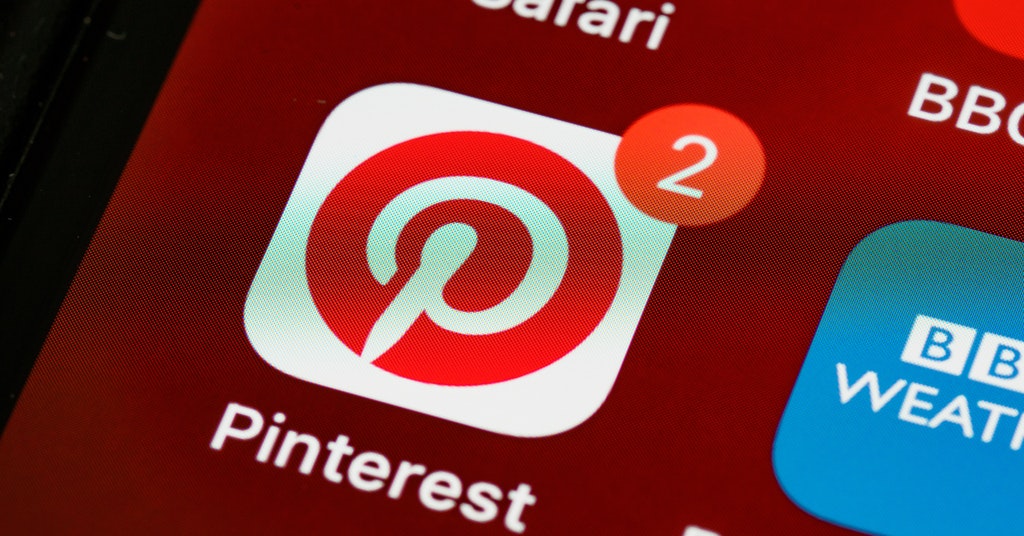
Shaheryar Sadiq
Editor
Pinterest became a billion-dollar business in 2019 with revenue of over 1 billion dollars and is now considered as the 4th largest social media platform after Facebook and Instagram, and YouTube.
Although Pinterest isn’t as vast as Facebook still, the platform is preferred by many and is attractive to advertisers.
In the past year, Pinterest reported 70 million monthly active users, making a total of 335 million monthly users. Around 43% of internet users are now using Pinterest, which means it is an excellent opportunity for businesses to market and elevates their brand image using Pinterest.

How brands can leverage Pinterest to make sales. Source: pexels.com
Why Pinterest?
There are over 300 million users present on Pinterest who are logging in to the social media platform to connect and share. This is a good way for brands to reach out to a huge number of people if they are strategizing their approach the right way. The active Pinners (active users of the platform) make a purchase influenced by Pinterest.
People are using this platform for ideas for things like home décor, cleaning, DIYs, and much more. For example, if someone is interested in doing a room makeover, they would use Pinterest for ideas; if your business is related to interiors or furniture, you can use the medium to showcase and redirect the audience towards your business.
Pinterest is not merely a platform to save ideas; rather, it has become a place where people look out for brands that match their wavelengths. There are multiple ways brands are using the platform to engage with the audience and increase sales.
You can use the platform in a way that the audience is engaged organically. Let’s have a look at some of the best practices that brands can use to grow their business:
How brands can use Pinterest to make sales
1. Branded pins
Branded pins can play an important role in increasing your brand identity on Pinterest. More than 97% of the pins on Pinterest are non-branded, which gives business owners an excellent opportunity to brand your pins.
Pinterest is all about images and visuals, so it is important to make your pins as informative about your brand as you can. You can simply add your brand’s logo at the side of your pin for the first impression. The viewers would then be redirected towards your brand and are good to increase traffic.
2. Create mobile-responsive content
It is a well-known fact that people use all social media platforms more frequently on their smartphones and less on laptops. It is important that you make your visuals that look better on the phone, and the dimensions are according to screen dimensions.
More than 85% of Pinterest users use the platform using a mobile phone, so it is essential that you keep the visual dimensions in mind. Also, if you’re linking your pin with another page, then make sure that it is mobile-friendly as well. Make sure the font size is also appropriate, not too big or too small for the screen.
3. Focus on look and feel
While creating your pins, make sure they are similar to what your website is selling. Too often, people create visually appealing pins only for the user to find out their website is nothing close to what was shown in the pin.
Even if you are not using the same photos on the pins, make sure the pictures have the same looks and feel, so the customer gets exactly what they are shown on the pin. According to Pinterest, pins that were directed to landing pages with the same images had a 13 percent higher online sales.
4. Time your campaigns
Like every other social media campaign, you must also schedule your campaigns on Pinterest according to the on-going festivals and events. There are various occasions as well as festivals at different times of the year, which you can use and campaign around it for your products.
You should also research the trends on Pinterest to see which times suit you best to launch and plan your campaigns. To make it easier for marketers, Pinterest issues Seasonal Insights with more details about usage and stats. In this report, Pinterest highlights the important events as well as the time for you to post around that.
For example, in the year 2019, for the New Year campaign, there were 183m pins saves; the most popular search queries were New Year’s Eve outfit ideas, New Year’s nails, New Year’s quotes, New Year’s resolution.
The time for Peak advertising opportunity was June- Dec. this is a detailed insight around one event, which can be helpful for you to plan your content accordingly to get the maximum conversion rate.
5. Creating a shop on Pinterest
The platform also makes it easier for your business by letting you create a shop on the platform. You need a business account to create a shop on Pinterest. The “shop” tab allows the users to instantly land on your product page.
You can also link your pin directly with your shop so that the user reaches the shop in a single click. This makes the user-experience fast and easy as they won’t have to go through your entire website to shop for a product.
You can keep updating newer products to your Pinterest store as well. The process of creating a shop is very simple and useful for businesses. The creative you are with your strategy, the better output you can receive of it.
To sum it up
These were some of the ways through which you can increase your business using the Pinterest platform. The platform provides you a great way to exhibit products, build a relationship with the clients, and eventually increase your conversion rate.
We hope that this article helped you in knowing how to use Pinterest for your business.
Shaheryar provides ghostwriting and copywriting services. His educational background in the technical field and business studies helps him in tackling topics ranging from career and business productivity to web development and digital marketing. He occasionally writes articles for Carpet Cleaning Guildford.
SEE ALSO:









